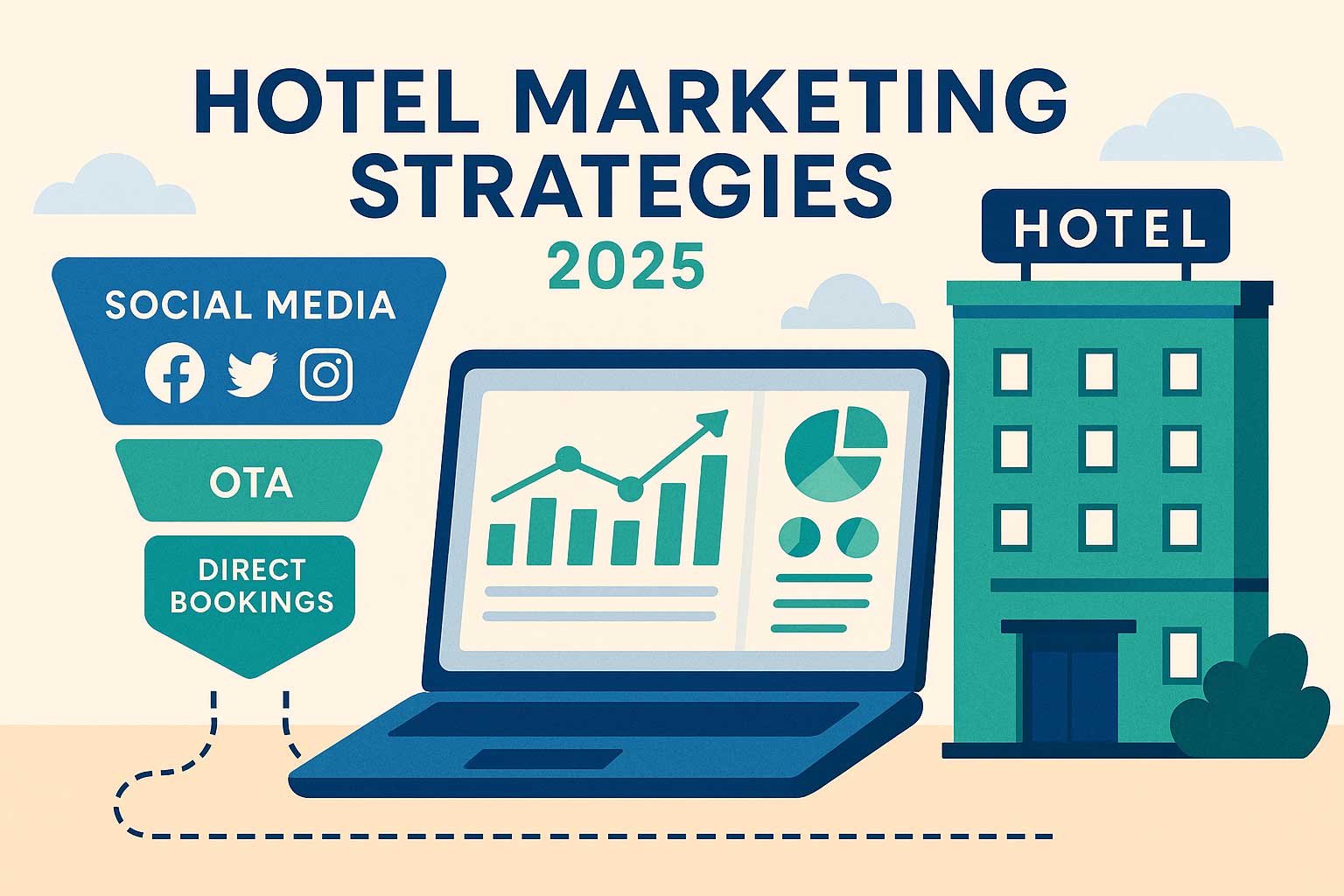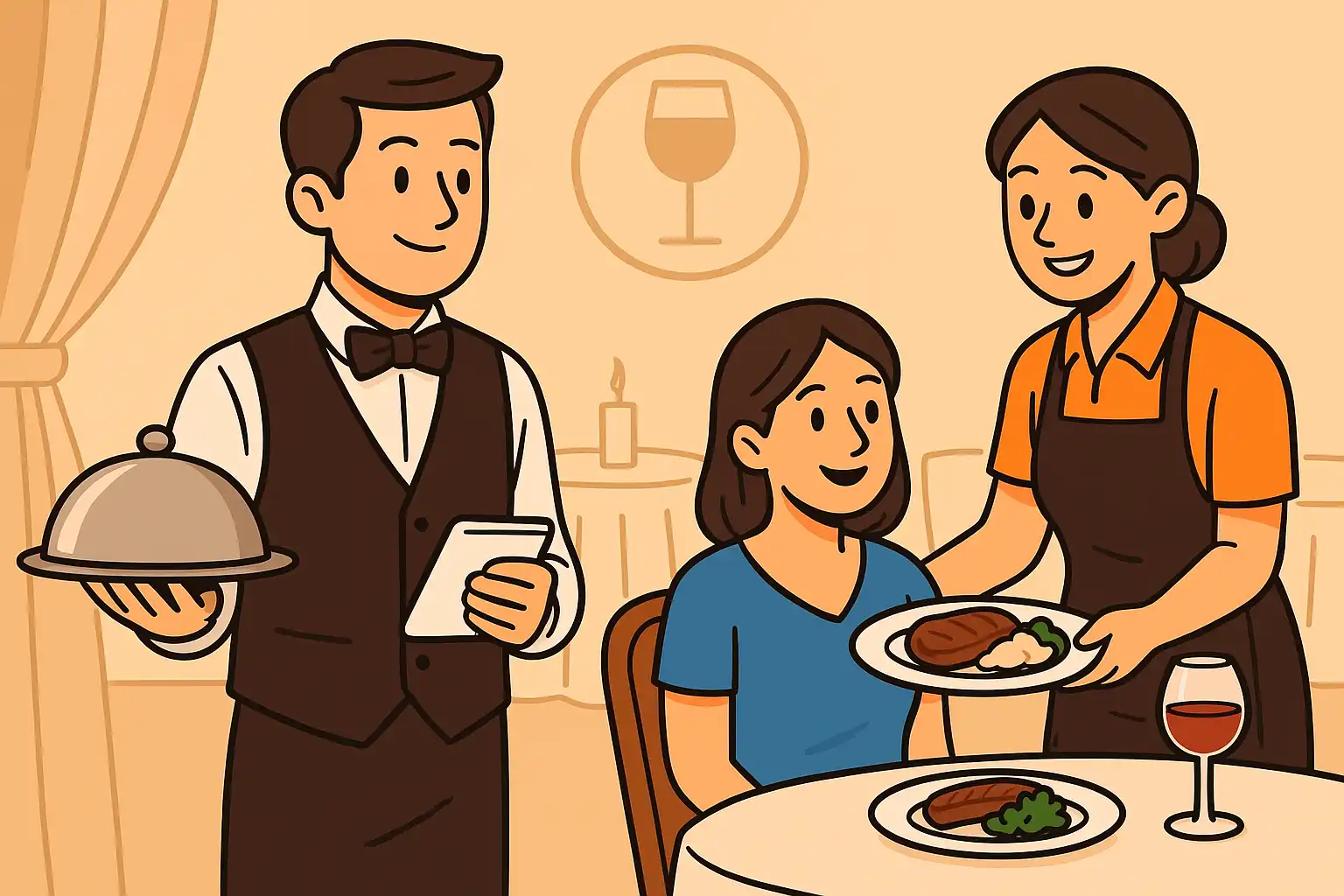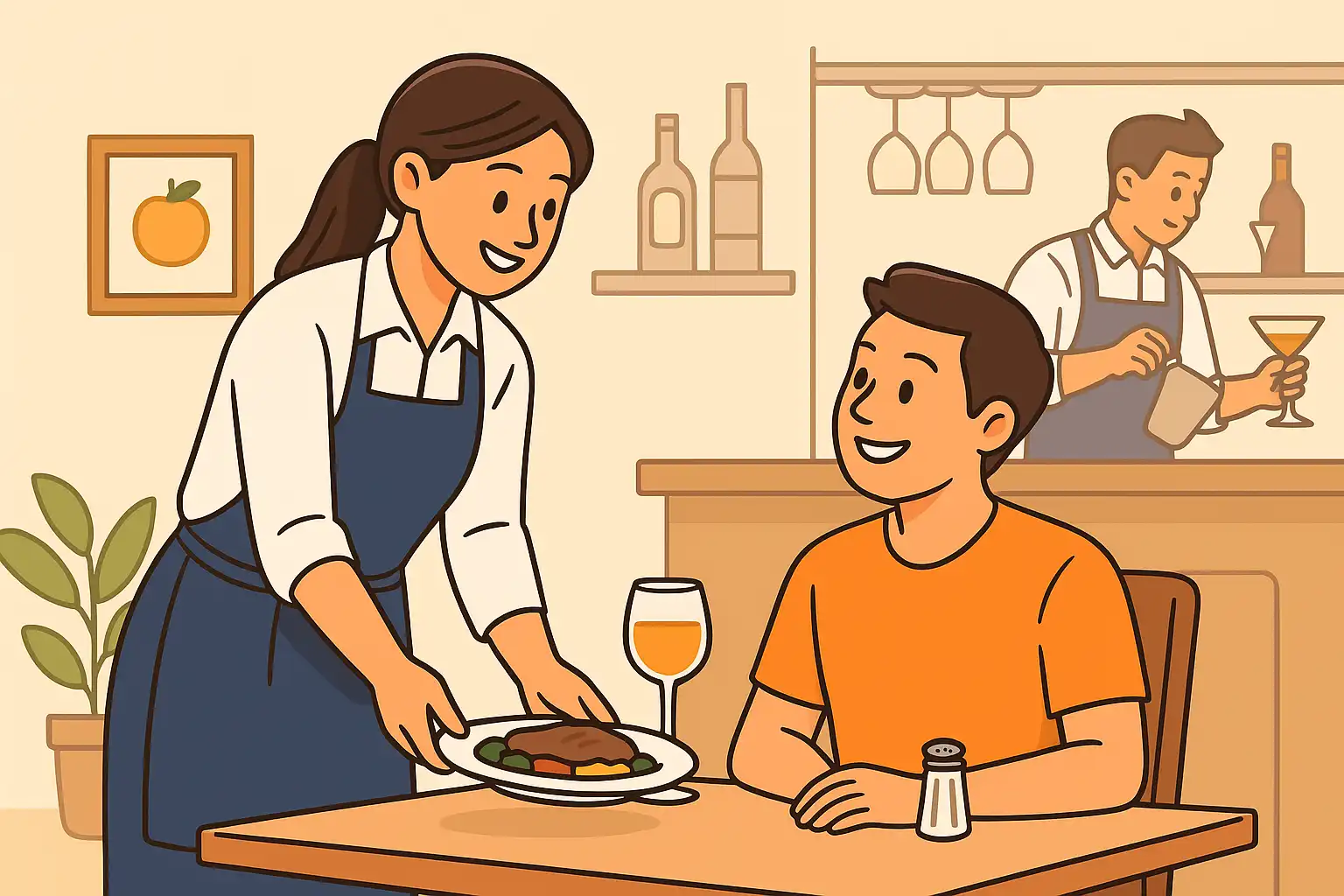Basics of Food & Beverage Service: Guide to F&B Operations
Nov 14, 2025
 Mika Takahashi
Mika TakahashiPopular Categories
Hotel Technology & InnovationHotel Operations OptimizationDigital MarketingIndustry TrendsRevenue ManagementHospitality Industry
Popular Categories
Trending Post

Hotel Walk Letter Template: Professional Guest Communication

Online Travel Agents: What They Are and How They Work

Hotel Security Systems: Modern Protection Solutions

Hotel Advertising: Complete Guide to Boost Bookings and Revenue

25 Hotel Marketing Strategy Ideas for 2025: Complete Guide

AI Reservation Agent: Revolutionizing Hotel Booking and Guest Experience

PMS Communication: Streamlining Property Management Through Effective Guest Messaging
Table of contents
The food and beverage industry is one of the largest and most diverse sectors in the global economy. It covers everything from quick service restaurants to upscale fine dining. Whether you’re starting out in hospitality management, running a food business, or looking to sharpen your operations, understanding the basics of food and beverage service is crucial.
This guide breaks down the essentials—from different service styles to operational efficiency—that you need to know to deliver great service and keep customers coming back. We’ll also highlight how beverage management fits into the bigger picture and how food and beverage professionals work behind the scenes to create satisfying dining experiences.

What is Food and Beverage Service?
At its core, food and beverage service is the organized process of preparing, presenting, and serving food and drinks to guests in various hospitality settings. It covers everything from greeting customers to managing table service and ensuring food safety.
Key activities include taking orders accurately, coordinating with kitchen staff, serving food and beverages professionally, and handling any customer complaints promptly. Whether you’re operating a fast food outlet or a fine dining restaurant, these basics form the backbone of your service.
On-Premise vs. Off-Premise Service
Food and beverage services typically fall into two categories:
- On-premise service happens when guests consume food and beverages within the establishment, like restaurants, bars, hotels, or cafeterias. This setup allows for direct interaction with customers and hands-on quality control.
- Off-premise service involves preparing food at one location and serving it elsewhere, such as catering, takeout, or delivery. This segment has grown rapidly—delivery services alone have expanded by over 200% recently, driven by changing consumer habits and tech innovations.
Why This Matters Economically
The global food and beverage service industry was valued at $2.3 trillion in 2021. It employs millions and continues to grow, especially as urbanization and disposable incomes rise in emerging markets.
In many hotels, food and beverage operations account for 60-70% of total revenue. That’s a big deal—and it means running these operations efficiently and offering exceptional service can make or break your bottom line.
The beverage service sector alone covers everything from coffee shops to cocktail bars, each requiring specialized knowledge and service skills.
Types of Food and Beverage Service Operations
Knowing the different operational models helps you tailor your approach and resources to meet your customers’ needs and your business goals.
Commercial F&B Operations
These are profit-driven businesses like restaurants, bars, cafes, hotels, and entertainment venues. They serve the general public and must juggle food costs, labor, and overhead while keeping prices competitive and service quality high.
For example, many commercial restaurants aim to keep food costs between 25-35% of revenue. Hotels often run multiple outlets—restaurants, bars, room service, banquets—requiring tight coordination to maintain consistent quality and inventory control.
Non-Commercial F&B Operations
Non-commercial food services focus on institutions like hospitals, schools, corporate cafeterias, and military mess halls. Profit isn’t the main goal here; instead, the focus is on providing nutritious, cost-effective meals that meet specific dietary and budget requirements.
Hospitals, for instance, must cater to therapeutic diets and strict food safety regulations. Schools balance nutrition with budget constraints while serving large volumes quickly. Corporate cafeterias emphasize convenience and speed during busy lunch hours.
Quick Service Restaurants (QSR)
Think McDonald’s or KFC. QSRs prioritize speed and efficiency, often targeting service times under three minutes from order to delivery. They rely on standardized menus, streamlined workflows, and tech like digital menu boards and mobile ordering to keep things moving.
A typical QSR uses single point service—customers order, pay, and pick up at one spot. This reduces labor costs and maximizes throughput.
Full Service Restaurants (FSR)
These include fine dining, casual dining, and family restaurants. They offer table service with skilled servers who provide personalized attention and detailed menu knowledge.
Fine dining demands the highest service standards, with servers trained in formal protocols, wine pairings, and food presentation. Casual dining balances quality and efficiency, while family restaurants focus on comfort and reliable service.
Catering Services
Hotel catering requires flexibility to serve various venues and event types. Whether it’s a wedding or corporate event, catering teams manage logistics, setup, service, and cleanup—all while maintaining food safety.
For example, wedding catering often involves elaborate presentations and custom menus, while corporate catering focuses on professionalism and efficiency.

Service Styles and Methods
Mastering different service styles helps you match your offering to customer expectations and operational needs.
Table Service Types
Table service is the classic hospitality approach where servers bring food and drinks directly to seated guests. Here are the main types:
English Service (À la Russe)
This formal style serves plated food from the guest’s left and clears from the right. It requires precise timing so all guests get their courses simultaneously. English service is common in upscale restaurants and formal events.
American Service
Here, food is plated in the kitchen and served from the guest’s left. It’s the most common style in mid-range restaurants because it balances efficiency and quality.
French Service
Food is presented on platters for guests to select, often with tableside finishing like sauce pouring or flambéing. Gueridon service, a French variant, uses mobile trolleys for tableside preparation. This style is theatrical and best suited for fine dining.
Russian Service
Synchronized service where all guests receive identical plates at once. This method is popular for formal banquets and requires tight kitchen coordination.
Gueridon Service
Similar to French service but focuses on tableside preparation using a trolley. It adds entertainment value and personalized attention, often increasing check averages.
Self-Service and Assisted Service
These models reduce labor costs and give customers more control.
Buffet Service
Guests serve themselves from a variety of dishes. Buffets are efficient for serving large groups but require strict food safety monitoring, like keeping hot foods above 140°F and cold foods below 40°F.
Cafeteria Service
Counter service with pre-prepared dishes. Common in schools and hospitals, it prioritizes speed and cost control.
Single Point Service
Order, payment, and pickup happen at one location. Used in food courts and fast-casual spots, this method boosts efficiency.
Room Service
Food is delivered to hotel rooms, usually within 30-45 minutes. This service demands coordination between kitchen, service, and housekeeping to maintain quality during transport
Key Roles and Responsibilities
A smooth food and beverage operation depends on clear roles and teamwork between front-of-house (FOH) and back-of-house (BOH) staff.
Front-of-House Positions
These staff members are the face of your business, directly influencing guest satisfaction.
Food and Beverage Manager
They oversee daily operations, manage inventory, control costs, and handle guest complaints. A typical salary ranges from $45,000 to $80,000, depending on location and establishment size.
Restaurant Manager
Manages daily service, staff performance, and customer relations. They juggle opening/closing duties and problem-solving on the floor.
Servers and Waitstaff
They take orders, serve food, and upsell menu items. Skilled servers can manage 15-20 tables per shift and significantly impact revenue through great service.
Hosts and Hostesses
First point of contact for guests, managing seating and reservations. They set the tone for the dining experience.
Bartenders
Mix drinks and interact with guests, often requiring knowledge of 50+ classic cocktails. Bartenders blend skill with hospitality.
Back-of-House Operations
These roles support the kitchen and ensure food quality and safety.
Executive Chef
Leads menu creation, kitchen management, and quality control. Typically has 10+ years of experience balancing creativity with cost management.
Kitchen Staff
Includes sous chefs, line cooks, and prep cooks, each with specific responsibilities to keep food prep efficient and consistent.
Food Safety Supervisor
Ensures compliance with food safety standards like HACCP, conducts staff training, and monitors temperature and sanitation protocols.
Dishwashers and Stewards
Maintain cleanliness of dishes and kitchen tools, crucial for smooth operations and food safety.

Essential Skills and Qualifications
Success in food and beverage service comes down to a mix of technical know-how, people skills, and certifications.
Core Competencies
- Food Safety Certification: Programs like ServSafe cover critical knowledge to prevent foodborne illness and are usually renewed every 3-5 years.
- Customer Service Excellence: Handling dozens of guest interactions per shift with professionalism makes the difference between good and great service.
- Multi-tasking and Efficiency: Managing multiple tables or orders simultaneously requires strong organization and prioritization.
- Product Knowledge: Knowing your menu inside out helps you answer questions confidently and upsell effectively.
- Point-of-Sale Proficiency: Modern POS systems handle orders, payments, and inventory. Staff need to be comfortable using these tools.
Professional Development
- Hospitality Management Education: Degree programs teach business, operations, and customer relations, often including internships.
- Culinary Arts Certifications: From short courses to associate degrees, these programs build technical cooking skills.
- Wine and Beverage Certifications: Sommeliers and bartenders benefit from specialized training to enhance guest experiences.
- Leadership Training: Prepares professionals for managerial roles, focusing on staff development, budgeting, and conflict resolution.
Food and Beverage Operations Management
Running a food and beverage operation smoothly means balancing quality, efficiency, and profitability.
Operational Excellence
- Menu Planning and Engineering: Aim for food costs around 28-35% of revenue. Use data to highlight profitable items and adjust the menu accordingly.
- Inventory Management: Rotate perishable stock every 3-7 days to minimize waste. Real-time tracking software can cut waste by up to 20%.
- Staff Scheduling: Keep labor costs at 25-35% of sales by scheduling smartly around peak times and cross-training staff.
- Service Timing: Target serving appetizers within 10 minutes and entrees within 20 minutes to keep guests happy and tables turning.
Quality and Safety Standards
- HACCP Implementation: Follow the seven principles to monitor hazards and ensure food safety from receiving to serving.
- Temperature Control: Keep cold foods below 40°F and hot foods above 140°F, checking regularly during service.
- Sanitation Protocols: Clean and sanitize frequently, using proper chemicals and training staff to maintain hygiene.
- Guest Feedback: Monitor reviews and respond quickly to improve service and build loyalty.
Current Industry Trends and Technology
The food and beverage sector keeps evolving. Staying ahead means embracing new tech and adapting to customer preferences.
Technology Integration
- Mobile Ordering: Adoption has grown 30% since 2020, speeding up service and reducing errors.
- Contactless Payments: Now used by 70% of establishments, offering convenience and security.
- Kitchen Display Systems: Cut order errors by up to 40% and improve timing.
- Inventory Software: Helps forecast demand and automate reordering, reducing waste.
Emerging Practices and Sustainability
- Plant-Based Menus: Up 67% in popularity from 2019-2022, appealing to health-conscious and eco-aware diners.
- Waste Reduction: Zero-waste initiatives are in 40% of upscale restaurants, saving money and the environment.
- Health Focus: More transparent labeling and allergen management to meet diverse dietary needs.
- Local Sourcing: Supports community agriculture and offers fresher ingredients, often within a 150-mile radius.
- Ghost Kitchens: Delivery-only kitchens growing 50% annually, reducing overhead and expanding reach.

Pro Tip
When planning your food and beverage menu, balance customer favorites with high-margin items. Use sales data to spotlight profitable dishes and rotate seasonal options to keep the menu fresh and exciting.
Myth vs Reality
Myth: Quick service restaurants sacrifice quality for speed.
Reality: Many QSRs invest heavily in technology and standardized processes to ensure consistent food quality while maintaining fast service times.
Conclusion
Mastering the basics of food and beverage service sets you up for success in a complex and rewarding industry. From understanding service styles to leveraging technology and managing operations efficiently, the key is balancing tradition with innovation.
Whether you’re running a fast food outlet or managing a fine dining restaurant, focusing on exceptional service, quality control, and customer satisfaction will always pay off.
Key Takeaways
- Food and beverage service covers a wide range of operations, each with unique challenges and opportunities.
- Operational efficiency and exceptional service drive profitability and guest loyalty.
- Technology and sustainability are shaping the future of the industry.
- Continuous learning and staff development are essential for long-term success.
By keeping these fundamentals in mind and adapting to evolving trends, you’ll be well-equipped to thrive in the food and beverage industry and create memorable dining experiences every time.
